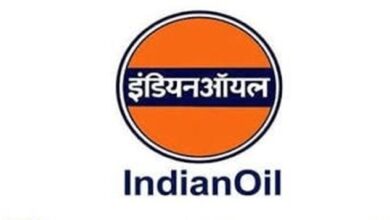
Buttons are the world’s 776th most traded product globally and account for a large share of China’s current account. As per the global report of 2019, India imports USD 91.6 million worth of buttons, being the fourth largest importer of buttons globally. China serves as the largest exporter of buttons in the world.
While China usually is the largest exporter of many items globally, it is almost a noteworthy event that the country also strictly specializes in the industry. We can see that nearly all other major exporters of buttons, including Hong Kong, Italy, Japan, and Germany, are also the major importers of buttons from China, meaning the primary value addition in these countries is much less.
This event occurs as an aftermath of a very intriguing economic theory concept- the external economies of scale. While we see the application of this theory in the United State’s Silicon Valley and India’s Bangalore, China’s button industry and its achievement presents a curious case of discussion of the flow and pattern of international trade and answers some fundamental questions surrounding the phenomenon in the process.
The button industry-

Let’s discuss what this concept means and how it gives China the capability to dominate the market for buttons in the entire world, not only because of comparative advantage due to its relative endowment but also some historical events.
It is believed in the economic theory of international trade that countries trade for two reasons- the difference in their production capabilities and for the achievement of economies of scale. While we credit a lot of work to relative factor endowments and comparative advantages, economies of scale always stay a significant underlying phenomenon.
It is the simple term dictating a falling average cost with increased production, supported by production evidence all around us. However, external economies of scale talk about this mass production benefit to the industry rather than individual firms, like in the case of the button industry. It means that the sector enjoys the use of an increase in production in terms of reduced costs. At the same time, the size of firms stays uniform, only that they get to reap the geographical and technological benefits we will discuss in a while. As for now, note that the market structure comprises many small firms operating closely in a competitive system.
For various reasons, concentrating production of an industry in one or few locations reduces the country’s costs even if individual firms in the sector remain small. The three main reasons why such a cluster of firms is much more efficient than a particular firm in isolation is-
- The ability of the group to support specialized suppliers
- The way that a geographically concentrated industry allows labor market pooling, and
- The way that a geographically concentrated industry helps foster knowledge spillovers.
It is why service industries are concentrated in India’s Bangalore, and Silicon Valley continued to be the financial hub of the United States.

It primarily means that the world supply of buttons emerges from a small town in China that cherishes the advantages of an external economy. Now, the case of an external economy is different because the market conditions it offers, both pre-and-post international trade, are severely different from those usually observed in the market space. Here’s how-
Instead of a regular upward-sloping supply curve, the industry supply curve for an industry that takes advantage of external economies of scale is forward falling since additional production costs are consistently declining. Thus, so does the prices. Note that this is a unique case of a supply curve for a competitive market, which usually prevails in external economies of scale.
While the implications of these forward-falling supply curves are limited for the domestic economy, the post-trade results are somewhat very intriguing. Allow me to explain why.
Let’s first consider pre-trade conditions of the button industry compared to other countries. China has a relative advantage in the production of buttons due to two primary reasons-
1. Relative factor endowments of labor. Button industry, as opposed to, say, the financial services industry, is a labor-intensive industry, primarily requiring abundant unskilled labor. It is also known that China has a relative labor supply advantage due to its relative endowment and availability benefits over other countries, meaning that the rental cost of labor is comparatively much less due to the competitive environment.
Again, market prices reflect the relative scarcity of a good, provided absence of any externalities. As a result, the relative cost of production is much less in China than in the United States, where 40 percent labor force is skilled, or Germany, where hourly wage rates are amongst the highest globally.

2. But, why couldn’t Vietnam, which also has labor endowment advantage, or India, with low labor wage rates, has China’s dominance? It shows that comparative advantage partially explains the pattern of the trade. What explains the other half?
Well, the answer to it lies in the presence of historical contingency. Historical contingency refers to the initial advantage given to a particular location in a specific industry, which gets locked in by external economies of scale even when those circumstances that created the initial advantage are no longer relevant.
For Example- New York became the financial center of the United States thanks to the Erie Canal, which made it the nation’s leading port. It has retained that role even though the canal is now used only for recreational boats.
Similarly, Bangalore might not be what it is today if vagaries of local politics had not led Texas Instruments to choose to locate their investment project there, back in 1984, rather than in any other Indian city.

Together, these parameters contribute to the external economies of scale-led button industry being initially priced at a lower rate in China in a pre-trade economy than in any other country. It means that as trade opens up, in the sense that countries can choose to trade buttons with each other, the cheaper availability in China becomes a much better alternative for the rest of the world because of their pricing than elsewhere in the world.
As a result, China dominates the specialization of the button industry and meets a substantial proportion of the world’s demand for buttons through its domestic production. All hail external economies of scale!
This trade also has another peculiar advantage. The effect of the concentration of production on prices allows China to further lower its button prices due to the increased production due to world demand. It means that the prices that were already lower in the pre-trade period further decrease once international trade takes place, meaning that the post-trade prices are lower than in any country involved in production.
It is very different from trade models without increasing returns to scale, where relative prices converge to a median of prices post international trade. In the case of the button industry and similar industries with external economies of scale, the effect of business is to reduce costs everywhere and reap benefits of even stronger economies of scale thanks to the concentration of most of the world production of the traded item in a single, particular location.
Article Proof Read & Edited By Shreedatri Banerjee






